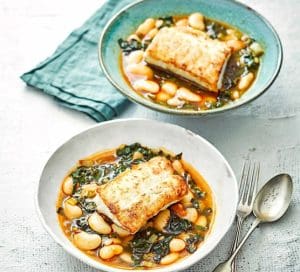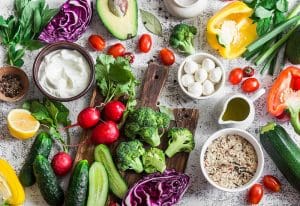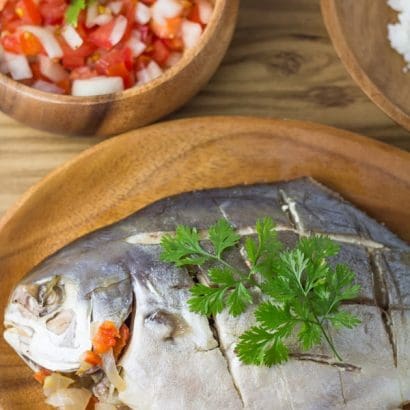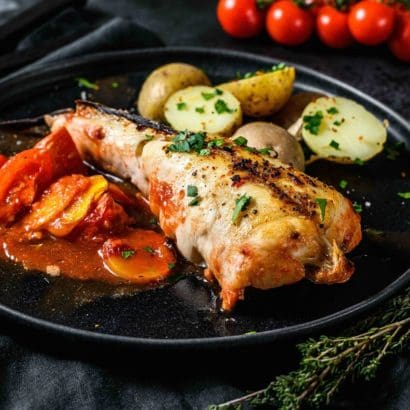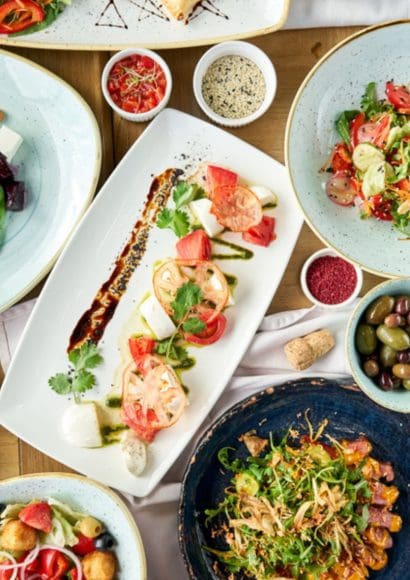
Welcome to a journey through the vibrant culinary world of the Mediterranean coast! From the sunny shores of Spain to the picturesque villages of Greece, the Mediterranean region boasts a rich tapestry of flavors, ingredients, and culinary traditions that have captivated taste buds for centuries.
In this article, we’ll delve into the essence of Mediterranean gastronomy, highlighting its emphasis on fresh, seasonal ingredients, healthy cooking techniques, and a harmonious balance of flavors. Whether you’re a seasoned food enthusiast or a curious novice, prepare to tantalize your senses as we uncover the secrets behind some of the world’s most beloved dishes and ingredients.
Contents
The Mediterranean Diet: A Healthy Lifestyle Choice.🐟
Embark on a culinary adventure as we uncover the secrets of the Mediterranean diet, hailed worldwide for its health benefits and delicious flavors. This diet isn’t just about what you eat—it’s a way of life that promotes longevity and vitality.
What makes the Mediterranean diet so special?
It’s all about embracing the bounty of nature and savoring wholesome, nutrient-rich foods that nourish both body and soul. At its core, this diet emphasizes fresh ingredients and simple preparations, making it accessible to people of all ages and culinary skill levels.
Exploring the Essentials.
Let’s take a closer look at the key components of the Mediterranean diet:
-
- Olive Oil: Often referred to as “liquid gold,” olive oil is the cornerstone of Mediterranean cuisine. Rich in heart-healthy monounsaturated fats and antioxidants, it’s used liberally in cooking and dressing salads.
- Fish: From grilled pomfret fish to succulent salmon, seafood takes center stage in Mediterranean meals. Packed with omega-3 fatty acids and protein, fish is celebrated for its role in promoting brain health and reducing the risk of chronic diseases.

- Vegetables: Vibrant and colorful, vegetables add a burst of flavor and nutrients to every meal. From juicy tomatoes to crisp cucumbers, the Mediterranean diet encourages plenty of plant-based foods to support overall health and well-being.
- Fruits: Sweet and refreshing, fruits provide a natural source of vitamins, minerals, and fiber. Whether enjoyed fresh or as part of a dessert, fruits like oranges, figs, and grapes are staples of the Mediterranean diet.
- Legumes: Versatile and filling, legumes such as chickpeas, lentils, and beans are prized for their high protein and fiber content. They’re often featured in soups, stews, and salads, adding texture and depth to Mediterranean dishes.

- Grains: Whole grains like couscous and bulgur form the foundation of many Mediterranean meals. Rich in complex carbohydrates and essential nutrients, they provide sustained energy and promote digestive health.
Embracing a Mediterranean Lifestyle.
Transitioning to a Mediterranean diet isn’t just about what you put on your plate—it’s about embracing a holistic approach to health and well-being. By incorporating physical activity, stress management, and social connections into your daily routine, you can experience the full benefits of this ancient way of eating.
Discover Delicious Pomfret Fish Recipes.
Looking to add some Mediterranean flair to your cooking repertoire? Check out these 5 recipes with pomfret fish.
Iconic Dishes of the Mediterranean Coast.🐟
Embark on a flavorful journey as we explore some of the most beloved dishes from the Mediterranean region. From the sun-drenched shores of Spain to the bustling markets of Morocco, these iconic creations capture the essence of Mediterranean cuisine.
1. Spanish Paella.
History: Originating from the coastal region of Valencia, paella is a vibrant rice dish that reflects Spain’s diverse culinary heritage. Traditionally cooked over an open flame, paella features a tantalizing mix of seafood, chicken, and vegetables, infused with saffron for a rich, golden hue.
Ingredients: Key ingredients include bomba rice, prawns, mussels, chorizo, and bell peppers, all simmered together in a savory broth until the rice is tender and infused with flavor.
2. Moroccan Couscous.
History: A staple of North African cuisine, couscous has been enjoyed for centuries as a hearty and comforting dish. Made from steamed semolina grains, couscous is often paired with tender lamb, chickpeas, and a medley of aromatic spices, creating a symphony of flavors.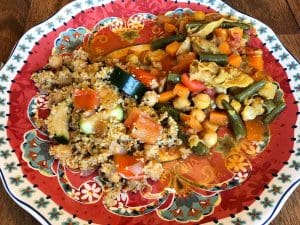
Ingredients: Common additions to Moroccan couscous include raisins, almonds, carrots, and onions, all cooked together in a fragrant broth until the couscous is fluffy and infused with the essence of the ingredients.
3. Greek Tzatziki.
History: Cool, creamy, and refreshing, tzatziki is a classic Greek condiment that adds a burst of flavor to any dish. Made from strained yogurt, cucumber, garlic, and dill, tzatziki is a versatile accompaniment that pairs perfectly with grilled meats, pita bread, or as a dip for fresh vegetables.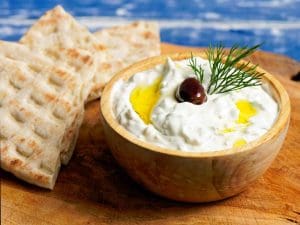
Ingredients: The key ingredients in tzatziki include Greek yogurt, cucumber, garlic, lemon juice, and olive oil, all blended together to create a smooth and creamy texture with a tangy, herbaceous flavor.
4. Italian Pesto.
History: Hailing from the picturesque region of Liguria, pesto is a vibrant sauce that celebrates the flavors of fresh basil, pine nuts, Parmesan cheese, and garlic. Traditionally prepared with a mortar and pestle, pesto is a versatile condiment that adds a burst of herbaceous flavor to pasta, sandwiches, and salads.
Ingredients: To make pesto, you’ll need fresh basil leaves, pine nuts, Parmesan cheese, garlic, and olive oil, all blended together until smooth and creamy, creating a vibrant green sauce that’s as beautiful as it is delicious.
the Star Ingredients of Mediterranean Gastronomy.🐟
Dive into the vibrant world of Mediterranean cuisine as we uncover the key ingredients that define its rich flavors and cultural heritage. From the sun-kissed shores of Greece to the rolling hills of Italy, these culinary treasures are celebrated for their taste, versatility, and health benefits.
1. Extra Virgin Olive Oil.
Extra virgin olive oil is the liquid gold of Mediterranean cooking, prized for its fruity flavor and high nutritional value. It’s not just a cooking staple—it’s a symbol of Mediterranean culture and tradition.
Usage: Use it for sautéing vegetables, drizzling over salads, or dipping with crusty bread. Its rich antioxidants and healthy fats make it a cornerstone of the Mediterranean diet.
2. Fresh Seafood.
From succulent prawns to delicate sole, fresh seafood is a hallmark of Mediterranean cuisine. Sourced from the pristine waters of the Mediterranean Sea, these treasures are bursting with flavor and nutrients.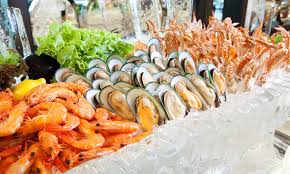
Usage: Grill, bake, or poach seafood to perfection, letting its natural flavors shine. By incorporating more seafood into your diet, you’re not just enjoying delicious meals—you’re also supporting marine ecosystem preservation.
3. Flavorful Herbs.
Fragrant herbs such as basil, oregano, and rosemary add depth and complexity to Mediterranean dishes. Whether fresh or dried, these aromatic herbs elevate the flavors of everything they touch.
Usage: Sprinkle herbs generously over roasted vegetables, pasta dishes, or grilled meats. Not only do they enhance the taste of your food, but they also offer a myriad of health benefits, from aiding digestion to boosting immunity.
4. Artisanal Cheeses.
Creamy feta, tangy pecorino, and nutty parmesan are just a few examples of the artisanal cheeses that adorn Mediterranean tables. Made with time-honored techniques, these cheeses add richness and depth to a variety of dishes.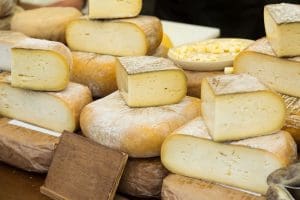
Usage: Crumble feta over salads, shave pecorino onto pasta, or sprinkle parmesan onto soups. With their distinct flavors and textures, artisanal cheeses elevate the taste of any meal, making them a beloved ingredient in Mediterranean cooking.
Protecting Marine Ecosystems.
Discover how you can contribute to marine ecosystem preservation through sustainable choices in your culinary adventures!
Exploring the Secrets of Mediterranean Cuisine.🐟
1. What are the benefits of following the Mediterranean diet?
The Mediterranean diet is much more than just a way of eating; it’s a healthy lifestyle that has been praised for its numerous health benefits. By focusing on fresh, natural ingredients such as extra virgin olive oil, fish, fruits, vegetables, and legumes, this diet promotes heart health, helps maintain a healthy weight, and can even reduce the risk of chronic diseases like diabetes and Alzheimer’s. Additionally, its emphasis on moderation and enjoying food in the company of friends and family fosters a positive relationship with food and reduces stress.
2. How to make an authentic paella?
Preparing an authentic paella is truly an art, and every chef has their own recipe and technique. However, some key elements are universal: bomba rice, a sofrito of onion, garlic, and tomato, seafood or fish stock, and of course, the final touch of saffron to give it that characteristic color and flavor. To achieve authenticity, it’s important to cook the paella in a traditional paella pan over an open flame, allowing the rice to form a delicious golden crust on the bottom known as “socarrat.” And don’t forget the fresh seafood, tender chicken, and green beans that make paella a complete delight.
3. What is the most famous dish in Greek cuisine?
When it comes to Greek cuisine, there is no more iconic dish than moussaka. This delicious casserole combines layers of roasted eggplant, seasoned minced meat with cinnamon and aromatic herbs, and a creamy béchamel sauce. Baked until golden and bubbly, moussaka is a feast for the senses that captures the very essence of Greek cuisine: simple, comforting, and full of flavor.

